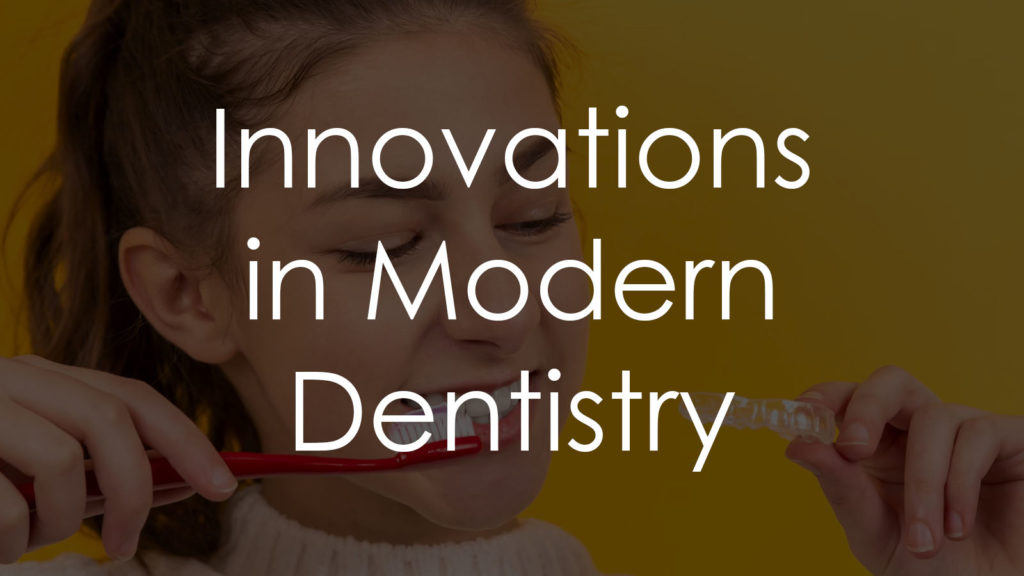Dental care has evolved significantly in recent years, thanks to advances in technology, techniques, and materials. Modern dentistry encompasses a wide range of innovative approaches aimed at improving oral health, enhancing patient comfort, and achieving superior treatment outcomes. In this article, we will explore some of the key aspects of modern dentistry and the advancements shaping the field.

1. Digital Dentistry:
Digital technology has revolutionized many aspects of dentistry, from diagnosis and treatment planning to patient communication and education. Some notable advancements in digital dentistry include:
- Digital Imaging: Digital radiography, cone-beam computed tomography (CBCT), and intraoral scanners provide high-quality images with reduced radiation exposure, aiding in accurate diagnosis and treatment planning.
- Computer-Aided Design/Computer-Aided Manufacturing (CAD/CAM): CAD/CAM technology enables the fabrication of dental restorations such as crowns, bridges, and veneers in a single appointment, eliminating the need for messy impressions and temporary restorations.
- 3D Printing: Additive manufacturing technologies allow for the rapid prototyping of dental appliances, such as surgical guides, models, and orthodontic aligners, with precision and customization.
2. Minimally Invasive Techniques:
Modern dentistry emphasizes minimally invasive approaches that preserve healthy tooth structure and minimize patient discomfort. Some examples of minimally invasive techniques include:
- Laser Dentistry: Dental lasers are used for various procedures, including cavity detection, gum disease treatment, soft tissue surgeries, and teeth whitening. Laser technology allows for precise and targeted treatment with minimal discomfort and faster healing.
- Air Abrasion: Air abrasion systems use a stream of fine particles to remove decay and prepare teeth for restorations without the need for drilling. This technique preserves more natural tooth structure and reduces the need for anesthesia.
- Microscopic Dentistry: Dental microscopes and magnification devices enhance visibility and precision during treatment, enabling dentists to identify and address dental issues with greater accuracy and efficiency.
3. Dental Implants:
Dental implants have become the gold standard for tooth replacement, offering a permanent and lifelike solution for missing teeth. Advances in implant design, materials, and surgical techniques have improved implant success rates and outcomes. Some innovations in dental implantology include:
- Digital Implant Planning: Computer-guided implant surgery allows for precise placement of implants, optimizing aesthetics and function while minimizing the risk of complications.
- Immediate Implant Placement: In certain cases, dental implants can be placed immediately after tooth extraction, reducing treatment time and preserving bone and soft tissue.
- Zygomatic Implants: Zygomatic implants are longer implants that anchor into the zygomatic bone (cheekbone), providing a solution for patients with severe bone loss in the upper jaw.
4. Preventive Dentistry:
Preventive dentistry remains a cornerstone of modern dental practice, focusing on patient education, early intervention, and personalized preventive measures to maintain oral health and prevent dental problems. Key components of preventive dentistry include:
- Regular Dental Check-ups: Routine dental examinations and cleanings enable dentists to detect and address dental issues early, preventing them from progressing into more serious problems.
- Fluoride Therapy: Fluoride treatments strengthen tooth enamel and help prevent tooth decay, particularly in individuals at higher risk of cavities.
- Dental Sealants: Dental sealants are thin protective coatings applied to the chewing surfaces of molars to prevent cavities in hard-to-reach areas.
Conclusion
Modern dentistry is characterized by innovation, precision, and a patient-centered approach to oral health care. From digital technologies and minimally invasive techniques to advanced implantology and preventive measures, today’s dental practices offer patients a wide range of options for achieving healthy, functional, and beautiful smiles. By embracing these advancements and collaborating with their dental providers, patients can enjoy improved oral health and well-being for years to come.